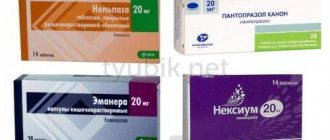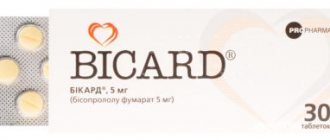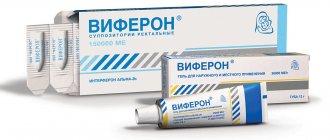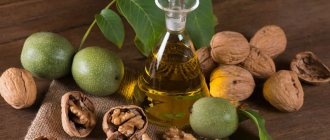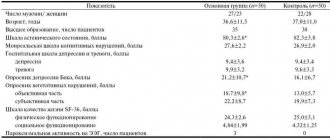The first antiretroviral drugs, nucleoside reverse transcriptase inhibitors, were only partially effective against human immunodeficiency virus. Only with the advent of the next class, protease inhibitors, was it possible to achieve disease control and dramatically reduce mortality. Our next article in the series on antiretroviral drugs is devoted to them, as well as to inhibitors of another enzyme vital for the treatment of HIV - integrase.
Protease inhibitors: mechanism of action
The introduction of protease inhibitors into clinical practice has become a cornerstone of HIV treatment. Their addition to the treatment regimen with two nucleoside reverse transcriptase inhibitors (NRTIs) made it possible to reduce the number of patients with a progressive course of the disease (before the development of AIDS or death) by half. In 90% of patients receiving the three-drug combination, the number of HIV RNA particles in the blood decreased from more than 20,000 per milliliter to less than 500 per milliliter after 24 weeks of therapy [1].
The mechanism of action of protease inhibitors is based on their ability to block one of the enzymes that serves as an important element of virus maturation in the life cycle of HIV. The HIV genome encodes a long polypeptide. After removal of the viral envelope and reverse transcription of the RNA genome, a polypeptide is formed containing all the viral gene products, including structural proteins and enzymes. HIV protease then breaks it down into its component viral proteins. When protease activity is suppressed, this process is blocked, which leads to impaired maturation of viral mRNA, resulting in the formation of viral particles that are unable to infect new cells [1].
The first protease inhibitors were peptidomimetic molecules, similar to and competitive with the precursor peptide. However, like most peptidomimetic proteins, early protease inhibitors had a significant pharmacokinetic disadvantage: they were poorly absorbed and rapidly eliminated when taken orally. The problem was solved by replacing the pyridine site in the structure of protease inhibitors with a thiazole, which is less electron-rich. Thanks to this, it was possible to increase the metabolic stability of the molecule and improve the solubility of the substance in water, as well as increase its effectiveness against the virus [1, 2].
The first protease inhibitor approved by the US Food and Drug Administration (FDA) was saquinavir, which received the green light just 97 days after its application was submitted. Over the next few months, two other protease inhibitors, ritonavir and indinavir, received marketing approval. Today, ten drugs in this class have regulatory approval: amprenavir, atazanavir, lopinovir, ritonavir, tipranavir, nelfinavir, indinavir, saquinavir, fosamprenavir and darunavir.
Finding a cure for COVID-19
Pfizer recently announced a drug it had developed against SARS-CoV-2. This is not the first drug against COVID-19; Merck has been at the forefront of this issue with its development.
And yet, such an event prompted obvious questions. What are the mechanisms of action of drugs against coronavirus infection? How are different drugs fundamentally different from each other? Which existing solutions are more effective? Can vaccines be replaced with drugs?
The answers to all these questions are in our article today. We prepared it together with the authors of the popular science telegram channel BioLogika.
There are two main ways to treat coronavirus infection: symptom relief in severe cases of the disease and targeted therapy aimed at the virus. In this article we will focus on the second approach, but it is worth saying a few words about symptomatic treatment.
COVID-19 begins with the virus multiplying in the human body: symptoms are caused by viral particles. In later and more severe stages, the main danger is hyperinflammation caused by the body's immune system being too active[]. Cytokine storm is the main cause of problems in severe COVID-19: the body’s condition worsens due to a positive feedback mechanism [].
To “pacify” the immune system, various nonspecific immunosuppressants have long been used: dexamethasone and other glucocorticosteroids []. Later, more specific techniques began to appear to prevent cytokine storm. It is possible to block the cells' response to various inflammatory signals. Then cytokines will be released, but the cells will respond less actively to them, and the positive feedback will be weakened. Inhibitors of certain Janus kinases work on this principle. Janus kinases are enzymes involved in many signaling cascades, including inflammatory ones. Janus kinase inhibitors include tofacitinib, ruxolitinib and other drugs [].
There is also a classic, etiotropic method of treatment - affecting the virus itself, and not the immune system. The disadvantage of these drugs for COVID-19 is that their use is effective only at the very beginning of the development of the disease. In later stages, the virus itself is no longer of key importance: the problem lies in the immune system. If you prevent the virus from multiplying, this will allow you to experience a mild or almost asymptomatic coronavirus infection. The coronavirus will not trigger dangerous immune reactions in the body, and as a result, the mortality rate can be significantly reduced.
For these drugs to work, timely and widespread testing of people with any mild symptoms is necessary. Everyone should have access to rapid tests based on the detection of coronavirus antigens in the mucous membrane. In Russia, few such tests are carried out, so the prospects for the use of such drugs in our country are quite vague.
The use of nucleotide analogues is an old proven method of treating viral diseases caused by herpes simplex virus, Ebola virus, HIV and others.
Back in December 2021, a study was published in Nature Microbiology that a substance called MK-4482, chemically resembling the nucleoside cytidine, was effective against COVID-19 []. It has been shown to be administered orally in tablet form, which is simple and convenient. How does the compound prevent the development of the disease? Nucleosides are the main “building blocks” of nucleic acids (DNA and RNA), they are necessary for the virus to replicate, so MK-4482 causes various problems when the virus multiplies.
The active substance penetrates the infected cell. There, the drug turns into an analogue of a nucleotide: after all, the virus uses nucleotides for replication, and nucleosides are their precursors. The virus's RNA polymerase, the protein responsible for replication, takes this molecule for an ordinary nucleotide. Replication is disrupted. How does this affect SARS-CoV-2?
First, inserting the “wrong” nucleotide can cause a mutation. Secondly, RNA polymerase can be inhibited or stopped: the virus cannot replicate. The substance MK-4482 works through the first mechanism: it causes numerous mutations of the virus, preventing its reproduction and evolution. Biologists are deceiving the coronavirus by slipping fake nucleotides into its polymerase.
Figure 1 | The principle of action of drugs similar to nucleotides or nucleosides
Adapted from the article “Identifying mechanism for a new class of antiviral drugs could have approval”, 2021 [].
This is exactly how the drug developed by Merck works: the drug causes mutations in the replicating SARS-CoV-2. According to the company, their drug reduces the risk of hospitalization for coronavirus patients by 50%, but clinical trials have not yet been completed, so final conclusions about the effectiveness and safety of the drug cannot yet be made. A potential risk of such drugs is an increased rate of emergence of new strains if the drug is used incorrectly and mutagenesis is not strong enough to eliminate the virus population[].
The drug from Pfizer has a fundamentally different mechanism of action: the main active ingredient is an inhibitor of viral proteases, preventing the proliferation of coronavirus. How does it work?
When assembling the capsid—the protein shell of the virus—the coronavirus first synthesizes one long polypeptide chain and then cuts it using proteases. It turns out several ready-made proteins []. When proteases are blocked, viral particles are not assembled and the virus stops reproducing. Some HIV drugs work on this principle.
One of the first studies on the use of such drugs was published in August 2021. Remdesivir, EIDD-2801 and others were effective against various coronaviruses, including SARS-CoV-2 [].
The Pfizer drug consists of the viral protease inhibitor PF-07321332 and the excipient ritonavir. Ritonavir was originally discovered as a protease inhibitor, but of another virus - HIV. In this case, ritonavir increases the effectiveness of the main drug: it predominantly inhibits liver cytochrome P450 - CY3A4, which metabolizes the main component of the drug - PF-07321332. Cytochromes P450 are a large group of liver enzymes from the class of monooxygenases involved in the inactivation, as a rule, of foreign substances, including drugs. Ritonavir weakens the work of two isoenzymes of cytochrome P450 - CYP3A4 and CYP2C6, as a result, the effectiveness of the drug increases.
Pfizer says its drug reduces hospitalization rates by 89%, but clinical trials are still ongoing. Merck and Pfizer's announcements refer to different phases of clinical trials, so it's difficult to say which drug is better.
Another way to treat Covid is the use of monoclonal antibodies []. Scientists isolate antibodies from people who have recovered from coronavirus, study these antibodies and synthesize new ones based on them.
Antibodies synthesized in the laboratory consist of two fragments. The first part binds to viral antigens (Fab - from the English fragment antigen binding), and the second is recognized by the immune system (Fc - from the English fragment crystallizable region, or crystallizing fragment of immunoglobulin). The antibody interacts with viral particles (opsonization) or virus-infected cells and attracts various components of the immune system: the complement system, natural killer cells. The humoral response is also activated: differentiation of B-lymphocytes into plasmacytes.
In addition, monoclonal antibodies can neutralize the virus directly: they form a “coat” around the viral particles, and they can no longer interact with human cells.
Figure 2 | Mechanisms of action of monoclonal antibodies
Adapted from the review “Antiviral Monoclonal Antibodies: Can They Be More Than Simple Neutralizing Agents?” [].
As with vaccination, antibodies help the body cope with infection, but in this case these antibodies are artificial and not produced by the body itself []. This is a kind of replacement therapy.
Typically, when treating viruses with monoclonal antibodies, entire cocktails of several types of antibodies are used to increase effectiveness. In the case of coronavirus, this is bamlanivimab + etesivimab or casirivimab + imdevimab. Other antibodies, such as sotrovimab, can be used alone rather than as part of a cocktail [].
The vast majority of monoclonal antibodies to coronavirus bind to the coronavirus spike protein, the very spike through which the virus latch onto cells and infect them. When this spike is covered by antibodies, the reproduction of the coronavirus is greatly slowed down, and the immune system, on the contrary, is activated.
The active ingredient of avifavir, favipiravir, was discovered in Japan more than five years ago. It is a derivative of pyrazine carboxamide and inhibits viral RNA polymerase, blocking the reproduction of various RNA viruses.
The first drug containing favipiravir is Avigan, which was registered in Japan in 2014 as an anti-flu drug. At the same time, the use of Avigan was approved only in “emergency situations” - against new strains, when other means were ineffective.
In a study on the safety of favipiravir, scientists conclude that the substance is generally safe, but there are quite a few problems []. In addition, favipiravir is contraindicated in pregnant women [and] this drug has never been approved in the United States. The effectiveness of favipiravir against coronavirus was low, and the drug was not used for treatment anywhere.
Developed in Russia, Avifavir is essentially a generic version of the Japanese favipiravir - the active substance and mechanism are the same. Clinical trials were conducted in Russia. The use of the drug is recognized as more effective than standard therapy []. However, the significance level of viral clearance rates (p-value) in this study was only 0.155, which is significantly higher than the standard 0.01 or 0.05. This means that the results are statistically unreliable. However, based on these studies, the medicine was registered in Russia and included in the recommendations of the Ministry of Health. Other drugs with the same active substance registered in Russia are Areplivir and Coronavir. The effectiveness and safety of these drugs are also questionable.
One of the ways to combat coronavirus is the use of RNA interference: interaction based on the principle of complementarity of a special small interfering RNA with the messenger RNA of the target protein, the translation of which we want to prevent. The miRNA molecule (from the English microRNA) does not carry information about any proteins, like messenger RNA, but can trigger the cleavage of messenger RNA. This signal can “turn off” the synthesis of certain proteins. This switching off is called RNA interference.
If you make miRNA directed against the proteins of the virus, you can stop its reproduction in the body. Despite the fact that RNA interference was discovered more than 20 years ago, there are quite a few FDA-approved drugs based on it. Only three drugs using siRNA (small interfering RNA), among which there are no antiviral drugs, and none with miRNA []. However, drugs that work on the principle of RNA interference can be really effective, since they work well against the hepatitis C virus, which has a genome similar to the coronavirus [].
Russian scientists from the FMBA are developing similar molecules against coronavirus; the first preclinical trials have already been successfully carried out []. The advantage of such drugs is their high specificity, because the principle of nucleotide complementarity works here. There are many problems to be solved: the degradation of siRNA in a living organism and the delivery of this molecule to cells.
There are various ways to treat coronavirus infection, but so far clinical trials of none of the drugs have been completed. When the drugs are finally tested and can be used, it will significantly reduce hospitalization and mortality rates from coronavirus.
But all drugs have certain disadvantages. Firstly, the drugs need to be used at an early stage of the disease. Secondly, their use must be strictly controlled by specialists, since if the course is interrupted ahead of time in each individual patient, the likelihood of the emergence of resistant strains of the virus increases. This phenomenon is reminiscent of the development of bacterial resistance to antibiotics. Finally, the drugs reviewed are very expensive: one course can cost several thousand dollars. Therefore, universal vaccination remains the main tool for combating the pandemic: medicine cannot replace vaccinations.
Bibliography
- Tay MZ et al. The trinity of COVID-19: immunity, inflammation and intervention //Nature Reviews Immunology. – 2021. – T. 20. – No. 6. – pp. 363-374.
- Zhang W. et al. The use of anti-inflammatory drugs in the treatment of people with severe coronavirus disease 2019 (COVID-19): The Perspectives of clinical immunologists from China //Clinical immunology. – 2021. – T. 214. – P. 108393.
- Lu S. et al. Effectiveness and safety of glucocorticoids to treat COVID-19: a rapid review and meta-analysis //Annals of translational medicine. – 2021. – T. 8. – No. 10.
- COVID-19 Treatment Guidelines. Kinase Inhibitors: Janus Kinase Inhibitors and Bruton's Tyrosine Kinase Inhibitors (covid19treatmentguidelines.nih.gov)
- Cox RM, Wolf JD, Plemper RK Therapeutically administered ribonucleoside analogue MK-4482/EIDD-2801 blocks SARS-CoV-2 transmission in ferrets //Nature microbiology. – 2021. – T. 6. – No. 1. – pp. 11-18.
- Identifying mechanism for a new class of antiviral drugs could hasten approval (psu.edu)
- Yang H. et al. Design of wide-spectrum inhibitors targeting coronavirus main proteases //PLoS biology. – 2005. – T. 3. – No. 10. – P. e324.
- Rathnayake AD et al. 3C-like protease inhibitors block coronavirus replication in vitro and improve survival in MERS-CoV–infected mice //Science translational medicine. – 2021. – T. 12. – No. 557.
- COVID-19 Treatment Guidelines. Anti-SARS-CoV-2 Monoclonal Antibodies (covid19treatmentguidelines.nih.gov)
- Pelegrin M., Naranjo-Gomez M., Piechaczyk M. Antiviral monoclonal antibodies: can they be more than simple neutralizing agents? //Trends in microbiology. – 2015. – T. 23. – No. 10. – pp. 653-665.
- Pilkington V., Pepperrell T., Hill A. A review of the safety of favipiravir—a potential treatment in the COVID-19 pandemic? //Journal of virus eradication. – 2021. – T. 6. – No. 2. – pp. 45-51.
- Shiraki K., Daikoku T. Favipiravir, an anti-influenza drug against life-threatening RNA virus infections //Pharmacology & therapeutics. – 2021. – T. 209. – P. 107512.
- Ivashchenko A.A. et al. AVIFAVIR for treatment of patients with moderate coronavirus disease 2021 (COVID-19): interim results of a phase II/III multicenter randomized clinical trial //Clinical Infectious Diseases. – 2021. – T. 73. – No. 3. – pp. 531-534.
- Hum C. et al. MicroRNA mimics or inhibitors as antiviral therapeutic approaches against COVID-19 //Drugs. – 2021. – T. 81. – No. 5. – pp. 517-531.
- Khaitov M. et al. Silencing of SARS-CoV-2 with modified siRNA-peptide dendrimer formulation //Allergy. – 2021.
- Tejero H., Montero F., Nuño JC Theories of lethal mutagenesis: from error catastrophe to lethal defection //Quasispecies: From Theory to Experimental Systems. – 2015. – P. 161-179.
- Hum C. et al. MicroRNA mimics or inhibitors as antiviral therapeutic approaches against COVID-19 //Drugs. – 2021. – T. 81. – No. 5. – pp. 517-531.
General properties of protease inhibitors
Drugs in this group reduce the concentration of viral RNA, increase the number of white blood cells responsible for the immune system's response to infection (CD-4 cells) and, ultimately, improve survival when included in therapy along with other classes of antiretroviral drugs.
In general, protease inhibitors have similar therapeutic effects. Their activity against HIV-1 and HIV-2 is assessed as high, and resistance to them develops slowly.
Pharmacokinetics
Protease inhibitors are extensively metabolized by isoenzymes of the cytochrome P450 system, in particular CYP3A4, which opens up the possibility of a number of drug-drug interactions. Agents that induce P450 enzyme activity, such as rifampicin or St. John's wort extract, accelerate the metabolism of protease inhibitors, reducing their plasma concentrations and therapeutic efficacy. Conversely, drugs that inhibit P450 enzymes, such as ketoconazole or cimetidine, increase plasma levels of protease inhibitors, which is associated with increased toxicity of the latter [2].
Currently, the most potent CYP3A4 inhibitor is ritonavir. It is specifically combined with other protease inhibitors that are CYP3A4 substrates to prolong their half-life [4].
Protease inhibitors are better absorbed when taken during or after meals [2, 3].
Indications
Drugs of this class are used to treat HIV infection, prevent mother-to-child transmission of infection, and post-exposure prophylaxis of the disease.
Contraindications
The simultaneous use of ritonavir with drugs whose elimination depends on the activity of CYP3A4 is contraindicated to avoid the toxicity of antiretroviral therapy.
Side effects
Adverse reactions with the use of protease inhibitors include [2, 3, 4]:
- gastrointestinal disorders, in particular, diarrhea with an unknown mechanism, which is complicated by the fact that it often becomes one of the complications of HIV;
- hyperlipidemia is a common side effect for all protease inhibitors, less common when taking atazanavir; Apparently, lipid metabolism disorders are associated with the redistribution of adipose tissue characteristic of HIV, which is aggravated by taking protease inhibitors;
- hyperglycemia, insulin resistance, which probably develop as a result of suppression of the glucose transporter by protease inhibitors, which leads to suppression of the activity of glucose uptake by cells; atazanavir is less likely to cause this side effect compared to other protease inhibitors;
- rash most often occurs when taking amprenavir.
A number of unique side effects are also known: for example, when taking atazanavir, hyperbilirubinemia may occur, which is not considered a sign of hepatotoxicity of the drug, and when using indinavir, crystalluria and nephrolithiasis occur, which is associated with the poor solubility of the drug in water. Therefore, patients receiving indinavir are advised to increase their fluid intake during treatment.
special instructions
The use of ritonavir as a single protease inhibitor is limited due to its significant digestive side effects at therapeutic dosages. Today the drug is used in low doses to increase the activity of other protease inhibitors. One of the most common combination drugs used to treat HIV today is lopinavir + ritonavir. It should be noted that ritonavir capsules and solutions contain ethyl alcohol, so patients receiving the drug should avoid taking drugs that cause a disulfiram reaction, in particular disulfiram and metronidazole [4].
Integrase inhibitors: mechanism of action
Integrase, along with reverse transcriptase and protease, is one of the key participants in HIV-1 replication. It catalyzes processes leading to the movement of DNA or its fragments within the genome or between genomes. Being part of the pre-integration complex, integrase recognizes long terminal repeats at the ends of the double strand of newly synthesized viral DNA, cleaves two or three bases from each end, and also participates in the transport of viral DNA into the nucleus of the target cell, where it determines the preferred site for the introduction of viral DNA into the chromosome and carries out its integration into the cellular genome [5].
Integrase inhibitors, by binding to its active site and blocking the strand transfer stage during the integration of retroviral DNA, prevent the formation of covalent bonds with the host DNA and the incorporation of HIV into the host genome [4].
Unlike reverse transcriptase and protease, integrase has no close analogues in the eukaryotic cell, therefore, drugs that selectively act on it should have minimal side effects [5].
The first protease inhibitor was raltegravir, approved by the US Food and Drug Administration in 2007 [6]. Today, along with raltegravir, 4 more drugs of this class are used: elvitegravir, dolutegravir, bictegravir and cabotegravir. There are two more molecules in development, one of which is likely to have a duration of action up to 4 times longer than raltegravir and may be classified as a second-generation integrase inhibitor.
General properties of protease inhibitors
The mechanisms of resistance to integrase inhibitors differ from those to other classes of antiretroviral drugs. If the basis of the resistance of most non-nucleoside reverse transcriptase inhibitors and protease inhibitors is a change in the configuration of the active center of the enzyme and the subsequent blocking of the addition of the drug molecule, then in the case of integrase inhibitors, in all likelihood, other phenomena occur, and they may differ for different mutations [7]. Raltegravir is considered to have a low genetic barrier to the development of resistance because a single point mutation in HIV can alter the ability of integrase inhibition. Cross-resistance between integrase inhibitors may occur [4].
Pharmacokinetics
The main route of elimination of raltegravir is through the liver, however, dose adjustment of the drug is not required in patients with mild to moderate hepatic impairment. Renal excretion plays a minor role in the metabolism of protease inhibitors, so the dose should not be adjusted in case of renal failure.
Raltegravir is not a substrate for cytochrome CYP450 enzymes, does not inhibit or induce them, which is associated with a low frequency of drug interactions.
Indications
Protease inhibitors are indicated for HIV-1 infection in patients who have developed resistance to other classes of antiretroviral drugs.
Contraindications
They have no therapeutic value due to the high safety profile of the drugs.
Side effects
Because antiretroviral drugs are usually prescribed in combination regimens, it is difficult to identify adverse reactions associated with a specific class or drug. In general, protease inhibitors are well tolerated. In controlled studies, side effects with raltegravir were comparable to those with placebo. Raltegravir is considered one of the safest drugs for the treatment of HIV infection due to the minimal risk of adverse events, both in patients who have not previously received antiretroviral therapy and who have already had experience in treatment with drugs of other classes [4, 8].
Proteolytic enzymes and their protein inhibitors from triticale grain
Proteolytic enzymes play a significant role in various physiological processes. The key role of proteinases is manifested not only in the processes of degradation of storage proteins, removal of “wrong” proteins formed as a result of mutations and biosynthesis errors, but also participation in post-translational processing of proteins, activation of inactive precursors of physiologically active proteins and peptides, which indicates that proteinases in many cases they are “triggers” of a number of cascade processes and perform various regulatory functions. It has now been established that proteolytic enzymes are involved in the processes of secretion, transport of protein substances through biological membranes, adaptation of cellular metabolism to changes in the external environment, and in the implementation of protective functions (Braudo, Danilenko, Dianova, Krokha, 2000; Mosolov, 1983). Along with physiological reasons, interest in proteolytic enzymes is also due to the fact that they are a convenient object for studying the structure of proteins, active centers of enzymes, mechanisms of regulation of enzymatic activity, and other important issues of enzymology and protein chemistry. From a practical point of view, interest in proteolytic enzymes is associated with their direct participation in processes occurring during the storage and processing of plant materials, as well as the use of protease preparations in various industries: agriculture, food industry, medicine. At the present stage of development of our ideas about the role of food as a factor in the prevention and treatment of various chronic diseases, numerous discoveries in food products of substances with preventive and therapeutic properties (nutraceuticals) predetermined a revision of priorities in food technology: if traditionally the main goal of nutrition was considered to satisfy human needs for macro- and micronutrients, then today, along with this, food technologies should focus on preserving the native properties of biologically valuable components, including those from plant materials that have therapeutic and prophylactic properties. All this fully applies to technologies for producing protein products (concentrates and isolates), which do not fully meet the specified purpose. Obviously, the task of freeing plant raw materials from undesirable components and ensuring certain functional properties of the resulting protein products remains relevant, but a compromise is necessary between maintaining nutritional value and improving the functional and technological properties of plant protein products. In this regard, great opportunities for modifying plant raw materials, including grain and its processed products, lie in the methods of food biotechnology, which are usually divided into three groups: the first involves the modification of raw materials under the influence of microorganisms, the second involves the use of exogenous enzyme preparations, the third involves the use of own enzymes, predominantly hydrolytic. At the present stage, methods of enzymatic modification of grain raw materials using microbial enzyme preparations with proteolytic and cellulolytic action have become most widespread. Thus, in the All-Russian Research Institute of Grain and Its Processing Products - a branch of the Federal Scientific Center for Food Systems named after. V.M. Gorbatov" RAS developed methods for the enzymatic modification of biopolymers of triticale grain and its processing products (bran), which make it possible to obtain products with varying degrees of hydrolysis of protein and non-starch polysaccharides that have certain functional and technological properties, which ultimately suggests a wide range of areas of their possible application - from bakery and flour confectionery products to meat and dairy products, drinks and juices (Vitol, Meleshkina, Karpilenko, 2016; Vitol, Meleshkina, Karpilenko, 2017; Meleshkina, Pankratov, Vitol, Kandrokov, Tulyakov, 2017). At the same time, the study of one’s own proteolytic enzymes, their isolation and purification for the purpose of using them to modify endogenous proteins, to which they show the greatest affinity, seems to be a very interesting task in terms of using the entire biopotential of the grain and the “environmental friendliness” of the resulting products. Such research is inextricably linked with the study of protein inhibitors of proteinases, which have traditionally been considered only as anti-nutritive components of raw materials and food products, but are of exceptional interest as a factor in the regulation of the proteolysis process, not only in
vivo ,
but also
in vitro .
Thus, enzymatic modification of food raw materials, carried out by exogenous enzyme preparations or endogenous enzymes, can lead to the creation of products with certain functional and technological properties and additional physiological activities, which each time should be the subject of special research.
The purpose of the study was to isolate, purify and characterize proteolytic enzymes and their protein inhibitors from triticale grain. Materials and methods
We used triticale grain from the 2021 harvest, provided by the Don Zonal Research Institute of Agriculture.
The content of soluble protein was determined by the Lowry method, protease activity by the modified Anson method using bovine serum albumin as a substrate. Inhibitory activity was determined by the residual activity of proteinases (Nechaev, Traubenberg, Kochetkova, Kolpakova, Vitol, Kobeleva, 2006). Fractionation of enzymes and their protein inhibitors was carried out on a column (2.3 x 35) filled with Toyopearl HW-55F gel; this brand of gel allows the separation of proteins with a molecular weight from 1000 to 700,000 Da. The column was preliminarily calibrated to determine the free (Vcb.) and total (Vtotal) volume of the column. The free volume was determined by the yield of blue dextran (molecular weight about 2 million Da). It was 44 ml. Total volume based on tyrosine yield. It was 140 ml. To determine the molecular weight of proteins by graphical method, the column was marked with standard markers with a known molecular weight (Germany) (Nechaev, Traubenberg, Kochetkova, Kolpakova, Vitol, Kobeleva, 2006). Results of the study and their discussion
Analysis of the data available in the literature on the isolation and purification of endogenous grain proteases indicates that the peak of research in this area occurred in the 70s - 80s of the 20th century. The work of domestic and foreign researchers has shown the presence of proteolytic enzymes and their protein inhibitors in dormant and germinating grain seeds (wheat, barley, rye, triticale) (Islamov, Khakimzhanov, Fursov, 2004; Islamov, Khakimzhanov, Fursov, 2005; Meleshkina, Pankratov, Vitol , Kandrokov, Tulyakov, 2017) and legumes (soybeans, beans, peas, mung beans, chickpeas) (Asatuloev, Karpilenko, Vitol, 2008; Mosolov, 1983). Some of them have been isolated and purified to a fairly high degree; the ability of endogenous proteinases has been proven to actively hydrolyze their own proteins, influencing not only the biochemical processes during grain ripening and germination, but also the processes associated with the degradation of grain proteins during processing. The regulatory role of protein inhibitors in the process of proteolysis at rest and during grain germination has been revealed. A new round of interest in endogenous proteinases and their protein inhibitors is associated, as noted above, with the possibility of their use for the enzymatic modification of biopolymers of grain and grain products. Work carried out at the All-Russian Research Institute of Grain and Its Processing Products has shown that in triticale grain, along with acidic proteinases with an optimum pH of 3.5, there are neutral and alkaline proteinases with optimum pH of 6.8 and 9.5, respectively, upon hydrolysis of the standard bovine whey substrate albumin (Vitol, Kandrokov, Starichenkov, Koval, Zhiltsova, 2015). In addition, it was found that the activity of acidic and neutral proteinases is largely associated with proteins concentrated in the peripheral parts of the grain, apparently with proteins of the aleurone layer (Vitol, Kandrokov, Starichenkov, Koval, Zhiltsova, 2015). The scheme for isolating endogenous proteases in the form of a complex preparation included the following stages:
- Triticale grain was crushed. A 0.3596 solution of Na2CC>3 was added to the crushed material (100% passage of a sieve with a diameter of 1 mm) in a ratio of 1:10. Extraction was carried out with intensive stirring on a mixer with a flexible drive at 4000 rpm for 5 minutes.
- The resulting suspension was centrifuged at 6000 rpm for 15 minutes. The precipitate was discarded, and the supernatant was used to precipitate enzymes (proteases).
- Precipitation was carried out by acidification with 5%
citric acid to pH 4.5. It was previously shown that at this pH value all proteolytic enzymes (acidic, neutral, alkaline) are precipitated. - The formation of the precipitate was carried out at a temperature of 4-6°C for 1 hour.
- The resulting precipitate was separated by centrifugation at 6000 rpm for 10 minutes, frozen and dried from the frozen state (lyophilic drying), which made it possible to preserve the activity of the isolated enzymes.
At all stages of isolation, protease activity was determined by the modified Anson method; bovine serum albumin was used as a substrate. Table 1 shows data on protein content, activity and degree of purification at different stages.
The data in Table 1 show that when neutral and acidic proteinases are precipitated by acidification, their purification occurs approximately 5-5.5 times. The use of a protein fractionation method based on differences in the physicochemical properties of individual proteins, in particular the method of gel chromatography on a column with Toyopearl gel HW-55F, made it possible to separate acidic, neutral and alkaline proteinases of triticale grain and determine their molecular weight in the composition of a complex preparation . To do this, 5 ml of a complex proteinase preparation, redissolved in a 0.35% Na2C03n solution concentrated 10 times, was applied to a column filled with Toyopearl gel HW-55F gel. The volume of collected fractions was 4 ml. The optical density of the eluate in the fractions was recorded at a wavelength of 280 nm on a spectrophotometer. Elution profiles and proteinase activities are presented in Figure 1.
According to the results of gel chromatography, the molecular weight of acidic proteinases is 75,000 Da, neutral proteinases - 250,000 Da, alkaline proteinases - 50,000 Da. At the same time, the degree of purification was, respectively, 17.03; 15.03 and 27.03 times. The results of studies on the characterization of purified protease preparations from triticale grain are summarized in Table 2. They indicate that acidic and neutral triticale proteases should be classified as thiol-type enzymes, since they are activated by cysteine and inhibited by p-chloromercurium benzoate (p-CMB), a specific inhibitor thiol enzymes; and alkaline proteinases - to serine enzymes, since they are inhibited by specific inhibitors of serine enzymes - diisopropyl fluorophosphate (DFP) and phenylmethylsulfonyl fluoride (PMSF). However, they cannot be classified as metal-dependent enzymes, since ethyleneaminetetraacetate (EDTA) does not affect their activity.
At the next stage of the work, protein inhibitors of endogenous proteinases were isolated and partially purified from triticale grain. When developing a scheme for isolating inhibitors, we were guided by the data of domestic researchers that protein inhibitors remain in the sedimentary liquid after extraction with water from grains of wheat, rye, soybeans, beans and precipitation of proteases upon acidification, suppressing the activity of its own proteolytic enzymes and the activity of trypsin (Mosolov , 1983). We obtained similar results when studying the interaction of inhibitors isolated by acidification in the pH range from 4.5 to 3.0 with triticale and trypsin proteinases (Fig. 2).
At the same time, the degree of purification of protein inhibitors of acidic and neutral proteinases was 26.6 times; alkaline proteinases - 25.0 times; trypsin -21.9 times. The protein inhibitors isolated in this way were fractionated on a Toyopearl gel HW-S5F column. The resulting fractions were analyzed for inhibitory activity towards intrinsic proteinases and trypsin (Fig. 3).
The data obtained show that the trypsin inhibitor and alkaline proteinase inhibitor are released in one fraction with an elution volume of 88 ml and has a molecular weight of 30,000 ¸ 35,000 Da. Inhibitors of acidic and neutral proteinases, according to the gel chromatography method, come out of the column with an elution volume of 96-100 ml and have a molecular weight of 15000¸20000 Da. This is additional indirect confirmation that enzymes belonging to the same type (trypsin and alkaline triticale proteinases - serine enzymes; acidic and neutral triticale proteinases - thiol enzymes) are specifically inhibited by various inhibitors by a competitive inhibition mechanism, that is, in the formation of an enzyme-inhibitor complex active centers of the studied enzymes and inhibitors are involved. Based on the experiments conducted, a scheme for isolating protein inhibitors from triticale grain was developed. It includes the following steps: Extraction of crushed material with water in a ratio of 1:10 with intensive stirring on a mixer with a flexible drive at 4000 rpm for 5 minutes. Centrifugation at 6000 rpm for 10 minutes. Acidification of the aqueous extract to pH 4.5. Formation of sediment within 1 hour at a temperature of 4-6°C. Centrifugation at 6000 rpm for 10 minutes (precipitate - proteinases; supernatant - protein inhibitors). Further acidification of the supernatant to pH 3.0. Formation of sediment within 1 hour at a temperature of 4-6°C. Centrifugation at 6000 rpm for 10 minutes. Redissolution of the sediment in 0.1 M phosphate buffer pH 7.5. Fractionation of protein inhibitors by gel chromatography on a Toyopearl gel HW-55F column. Separation of trypsin and alkaline proteinase inhibitors in triticale and inhibitors of acidic and neutral triticale proteinases. Conclusion
This work presents experimental data on the isolation, partial purification and characterization of proteolytic enzymes of triticale grain operating in the acidic, neutral and alkaline pH regions.
It has been shown that acidic and neutral proteinases of triticale grain are thiol-type enzymes, since they are activated by cysteine and inhibited by p-chloromercurium benzoate, a specific inhibitor of thiol enzymes. Alkaline proteinases belong to serine proteinases, since they are inhibited by specific inhibitors of serine enzymes - diisopropyl fluorophosphate and phenylmethylsulfonyl fluoride. Using gel chromatography, the molecular weight of triticale grain proteinases was determined: acidic - 75,000 Da, neutral - 250,000 Da, alkaline - 50,000 Da. A scheme for the isolation and purification of protein inhibitors of endogenous proteinases from triticale grain is proposed. Their ability to suppress the activity of their own proteinases and trypsin has been shown. Using gel chromatography, the separation of inhibitors of trypsin and alkaline triticale proteinases (with a molecular weight of 30,000 ¸ 35,000 Da) and inhibitors of acidic and neutral triticale proteinases (with a molecular weight of 15,000 ¸ 20,000 Da) was carried out. Taking into account all of the above, it should be noted that partially purified preparations of proteinases and their protein inhibitors obtained according to the proposed schemes can subsequently be used for the enzymatic modification of plant proteins and the regulation of proteolysis processes in various food technologies. Literature
1. Asatuloev I. A., Karpilenko G. P., Vitol I. S. Protein inhibitors of proteases from chickpea seeds // Bread products. 2008. No. 1. P. 58-59. 2. Braudo E. E., Danilenko A. I., Dianova V. T., Krokha N. G. Alternative approaches to obtaining vegetable bank products / in the book: Vegetable protein: new prospects (ed. E.E. Braudo). M.: Pishchepromizdat, 2000. P. 6-23. 3. Vitol I. S., Kandrokov R. X., Starichenkov A. A., Koval A. I., Zhiltsova N. S. Protein-proteinase complex of triticale grain // Storage and processing of agricultural raw materials. 2015. No. 8. P. 36-39. 4. Vitol I. S., Meleshkina E. P., Karpilenko G. P. Bioconversion of triticale bran using enzyme preparations of cellulolytic and proteolytic action // Storage and processing of agricultural raw materials. 2016. No. 10. P. 35-38. 5. Vitol I. S., Meleshkina E. P., Karpilenko G. P. Functional properties of modified triticale grain processing products // Storage and processing of agricultural raw materials. 2021. No. 2. pp. 27-29. 6. Islamov R. A., Khakimzhanov A. A., Fursov O. V. Isolation of inhibitors of serine proteases and amylases from wheat grain // Biotechnology. Theory and practice. 2004. No. 4. P. 117-122. 7. Islamov R. A., Khakimzhanov A. A., Fursov O. V. Trypsin inhibitor from wheat grain, isolated by affinity chromatography on trypsin-Sepharose // Biotechnology. Theory and practice. 2005. No. 2. P. 71-75. 8. Meleshkina EP, Pankratov GN, Vitol IS, Kandrokov RH, Tulyakov DG Innovative Trends in the Development of Advanced Triticale Grain Processing Technology // Foods and Raw Materials. 2021. Vol.5. No. 2. P. 70-82. DOI: 10.21179/2308-40S7-2017-2-70-82. 9. Mosolov V.V. Protein inhibitors as regulators of proteolysis processes. M.: Nauka, 1983.40 p. 10. Nechaev A. P., Traubenberg S. E., Kochetkova A. A., Kolpakova V. V., Vitol I. S., Kobeleva I. B. Food chemistry. Laboratory workshop. SPb.: GIORD, 2006. 304 p.
Vitol Irina Sergeevna
Candidate of Biological Sciences, Associate Professor, Senior Researcher Meleshkina Elena Pavlovna Doctor of Technical Sciences, Director of Institute of Food Sciences - branch of the Federal State Budgetary Institution "FSC of Food Systems named after.
V.M. Gorbatov" RAS The article was published in the journal: Storage and Processing of Agricultural Raw Materials (HIPS). – 2021. – No. 3. – P.36-45.
